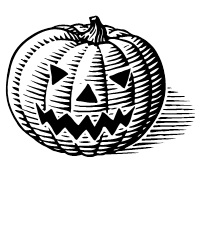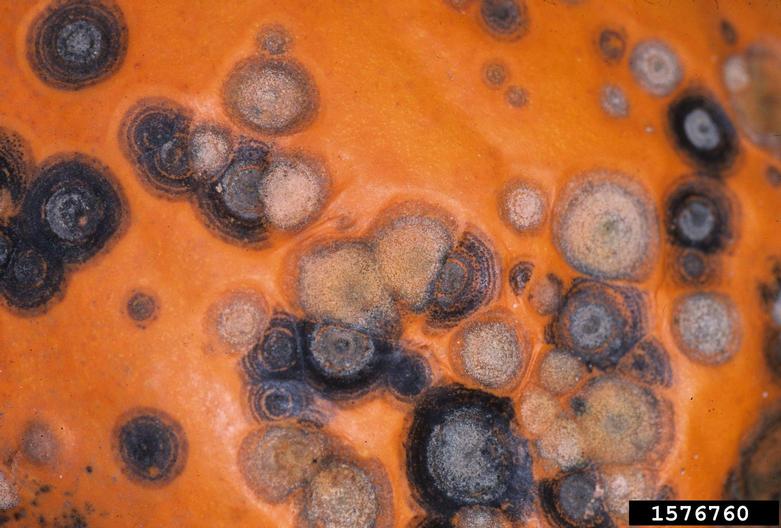 Harvesting and Storage of Pumpkins and Winter Squash October 28, 2015 Jeff Schalau, Agent, Agriculture & Natural Resources University of Arizona Cooperative Extension, Yavapai County Its pumpkin season and whether you plan to carve a jack-o-lantern or make a pumpkin pie, you might appreciate knowing how pumpkins are handled prior to harvest and stored for future use. Ideally, pumpkins should be harvested when fully mature, with a deep orange color and hardened rind. Sometimes growers harvest pumpkins between mid-August to early September which requires careful handling and storage of the pumpkin fruit before selling to the customers in late October. Many pick-your-own pumpkin growers rely on cooperative weather and cure their pumpkins in the field. Whether growing your own or buying from a pumpkin patch, pumpkins should be harvested before the first hard frost (27 degrees F) has come. Prior to the hard frost, the vines are often killed by lighter frosts, powdery mildew, or downy mildew. If left in the field, ripe pumpkins could be damaged by sunscald or start to rot from fungal or bacterial fruit rot pathogens. After the vines have dried, handle the fruit with care to avoid cuts and bruises. Harvest the pumpkin by cutting it off the vine with a sharp knife or a pair of lopping shears leaving 3-6 inches of the stem attached to the fruit. This makes the fruit look more attractive and less likely to be attacked by fruit rot pathogens at the stem attachment. Do not carry the pumpkin fruit using the fruit stems because the fruit is very heavy and may get damaged. Commercial growers should wash the fruit with soapy water containing one part of chlorine bleach to ten parts of water to remove the soil and kill the pathogens on the surface of the fruit. The fruits should be dried before setting in a cool shed or garage to cure. Pumpkin fruits are cured at 80-85 degrees F and 80-85 % relative humidity for 10 days. This is done to prolong the post-harvest life of the pumpkin fruit because during this process the fruit skin hardens, wounds heal and immature fruit ripens. After curing, the fruits have a longer shelf life and can be stored in a cool dry place. Put the fruits on a single layer on wooden pallets with space between each fruits. They should not be stored on a concrete floor. The optimal storage condition is 50-55 degrees F temperature and 50-70 % relative humidity. Under these conditions you can keep the fruits for about 2-3 months. Store the fruits away from apples since apples produce ethylene gas as they ripen which speeds up the ripening process in pumpkins, hence decreased shelf life. Check the fruits regularly and remove the ones that are rotten because if not removed, they will spread the pathogens in the storage area. Similarly, many winter squash can be stored for later use if properly handled. Butternut, Acorn, Hubbard, and other types are mature when the rind is hard and cannot be punctured by thumbnails. The mature fruit has a dull and dry skin compared to shiny, smooth skin of immature fruits. Remove the stem completely from Hubbard types and if desired leave only 1-inch long stump on the fruit. Butternut, Hubbard and other squash types do not need to be cured as the benefits are less compared to pumpkins. Acorn types have the shortest storage time of 5-8 weeks at 50 degrees F and relative humidity of 50-75 percent. Butternut, Turban, and Buttercup types can be stored at the same temperature and relative humidity as Acorn types but have a longer storage time of 2-3 months. The Hubbard types can be stored much longer than the rest (5-6 months). Winter squash should be marketed or used immediately when taken out of storage to avoid development of fruit rot diseases. Over the years, I have seen many root cellars during site visits to old farms and ranches in the Verde Valley. Most of these are partially below ground or built into the side of a hill. After reading the information above, I can appreciate the importance of these simple structures – some of which are still being used for produce storage today. Follow the Backyard Gardener on Twitter – use the link on the BYG website. If you have other gardening questions, call the Master Gardener help line in the Camp Verde office at 928-554-8992 or e-mail us at verdevalleymg@gmail.com and be sure to include your name, address and phone number. Find past Backyard Gardener columns or provide feedback at the Backyard Gardener web site: http://cals.arizona.edu/yavapai/anr/hort/byg/. Additional Resources Harvesting and Storing Pumpkins, Winter Squash, and Gourds Home Hort Hints, University of Illinios Extension extension.illinois.edu/hortihints/0410c.html Pumpkin and Winter Squash Harvest and Storage Penn State Extension extension.psu.edu/plants/vegetable-fruit/news/2015/pumpkin-and-winter-squash-harvest-and-storage 

|